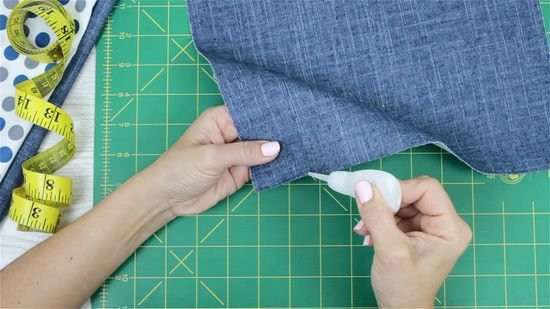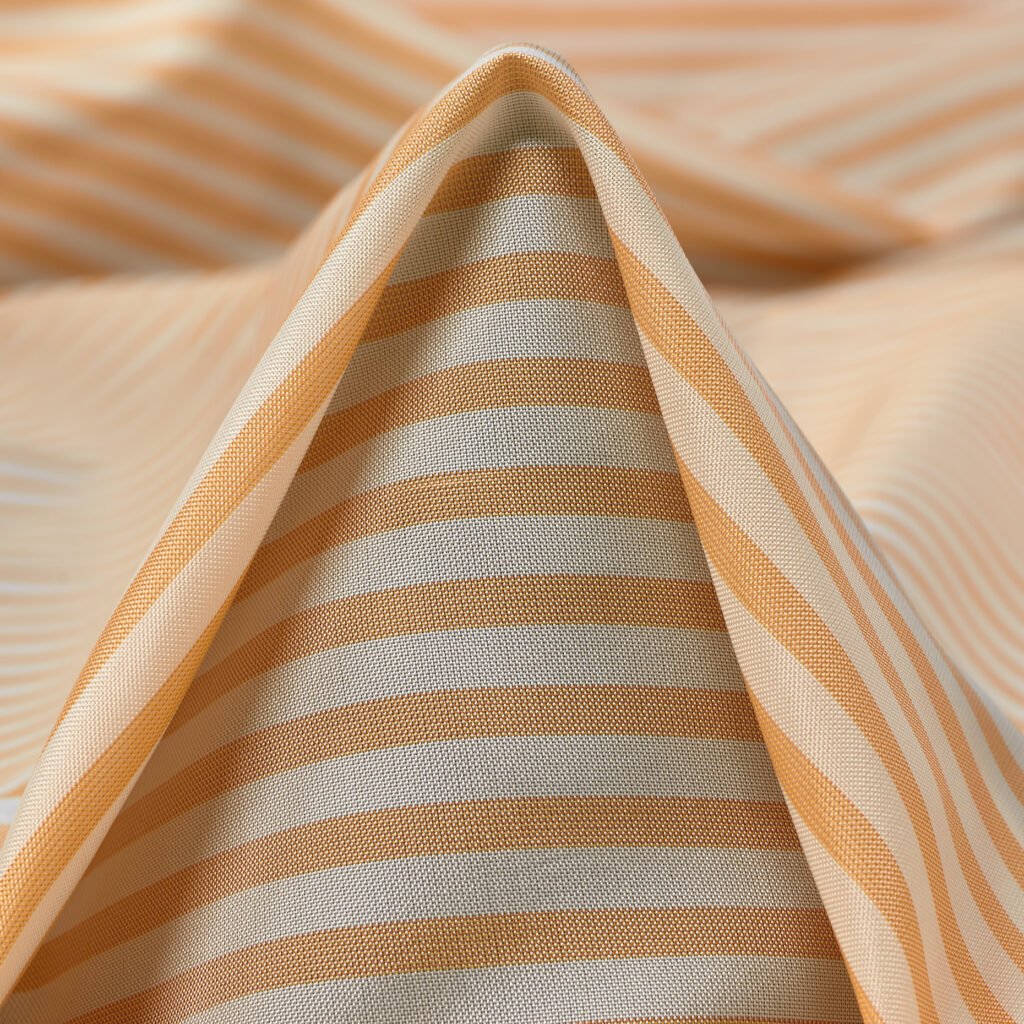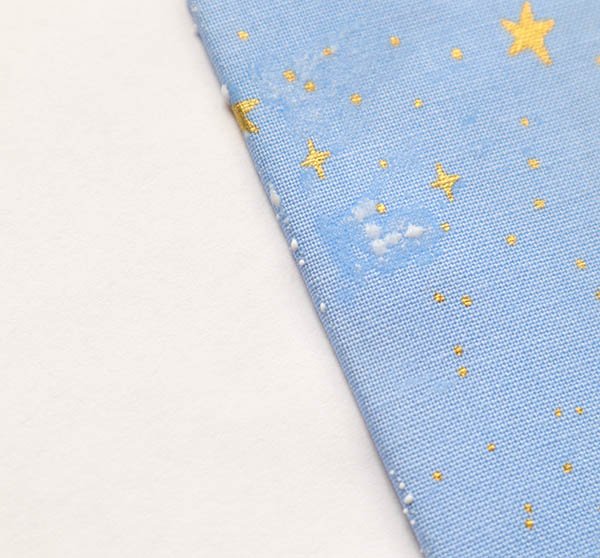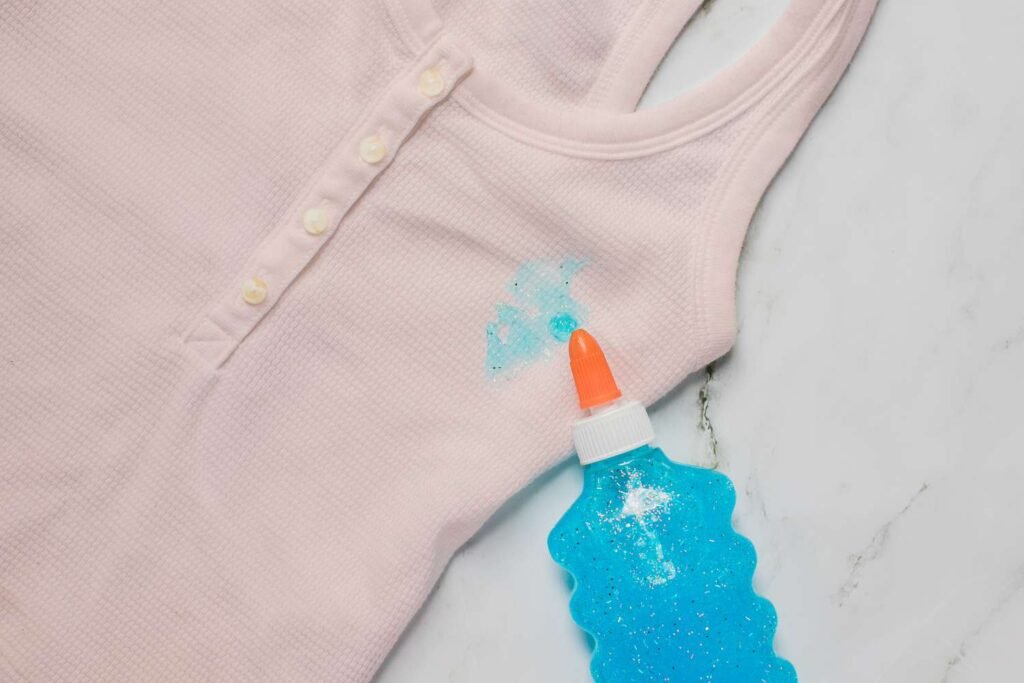Ever spent hours working on a piece of clothing, only to notice weird shiny patches or stiff spots on the lining? That’s glue seepage. And it can really mess up your hard work if you’ve used glue to attach interfacing or fix fabric in place. There is a chance you’ve run into this at some point.
It sneaks up on you, especially with delicate fabrics. One second, everything looks fine, and the next, there’s glue showing through in all the wrong places. This isn’t just a cosmetic problem either. Seepage can make the lining feel rough or even unwearable.
It’s a headache for tailors, fashion students, DIY crafters really anyone working with fabric. And once the glue’s soaked through, fixing it isn’t always easy.
That’s why this blog is here. We’re going to look at what causes glue seepage in lining cloth, how to prevent it, and what to do if it’s already happened. Whether you’re new to fabric glue or just want cleaner results, this guide will help you get it right, without the sticky mess.
What Is Glue Seepage in Lining Cloth?
Glue seepage in lining cloth is when the glue you’re using starts to bleed through the fabric. You might notice shiny spots, weird stiff areas, or even dark patches. It usually happens when you’re attaching interfacing or sticking fabric layers together.
Instead of staying hidden, the glue pushes through and shows on the good side of the lining. Not fun. This happens for a few reasons. One, too much glue. It’s an easy mistake. You think more glue means better hold, but fabrics don’t work like that. Especially thin ones.
Two, the wrong glue. Not every adhesive is meant for fabric. Some are too wet or too strong. Spray glue can also be tricky if you spray too close. And of course, the fabric type matters. Lightweight materials like satin, silk, or polyester are more likely to let glue sneak through.
When seepage happens, it messes up the look and feel. The fabric might look blotchy. It can feel stiff or even crunchy. And if it’s in clothing, it might feel uncomfortable against the skin.
A clean, soft lining suddenly feels cheap and scratchy. It might seem like a tiny thing, but it can totally throw off the whole project. Honestly, you don’t even think about it until it messes everything up. But once you know what causes it, it’s easier to avoid it next time.

Common Mistakes That Lead to Glue Seepage
Glue seepage usually comes down to a few easy-to-make mistakes. Most of us have done at least one of these, especially when we’re rushing or still figuring things out.
Too much glue
Yep, this one’s super common. You’re trying to get a strong bond, so you squeeze out a little extra. But with fabric, it just seeps through. A little goes a long way.
Wrong glue
Not all adhesives are meant for fabric. Some are too wet, too thick, or just don’t dry right. That’s when you get those stiff, crusty patches. Always check the label if it doesn’t say it works on fabric, skip it.
Bad glue technique
Dabbing it unevenly or pressing down hard right after glueing. That’s asking for seepage. Be gentle. Try to spread it thin and even.
No test run: Honestly, testing on a scrap piece can save the whole project. Just a small patch. Check how it dries, how it looks. Quick step, big difference.
Messing up one of these can lead to serious glue damage on cloth. So if you want clean results, keep these fabric adhesive mistakes in mind. Trust me, it’s worth it.
How to Prevent Glue Seepage in Lining Cloth
If you’ve dealt with glue bleeding through your fabric, you know how frustrating it can be. The good thing is that it’s not that hard to prevent. It just takes a bit of care and the right approach. Here’s what’s worked for me and a bunch of folks who’ve been through the same.
Choose the Right Glue
First off, glue choice matters a lot. You can’t just grab any glue and hope it plays nice with fabric. Some glues are too runny, others are too thick, and some just weren’t made for cloth at all.
Look for stuff made for fabric. I’ve had good results with tacky glue for heavier materials and fusible web when I want a clean bond with an iron. Spray adhesive works too, but only if you go easy and hold the can at the right distance.
Heat-activated adhesives are usually safer for linings because they sit on top instead of soaking in. With liquid glues, you have to be a lot more careful. If you’re unsure, just search for the best glue for lining fabric and read what people say that it helps.
Apply Glue the Right Way
Even with good glue, how you apply it makes a huge difference.
Here’s what I’ve learned:
- Don’t slap on a big glob. It’s better to dot or use super-thin layers.
- I like using an old paintbrush or a small bottle with a nozzle; it makes it easier to control.
- Don’t press down too hard right after. Let it sit a little first.
- One trick: Put wax paper or scrap interfacing under the fabric when glueing. It catches any extra and stops bleed-through.
Always Test First
Seriously, always test on a scrap piece. You might think you’ve got the right glue and method, but every fabric reacts differently. Put some glue on, wait a bit, then check for stiffness or weird spots. If it bleeds on the test piece, it’s gonna bleed on the real one. A quick test takes five minutes and can save your whole project.
Adjust Bonding Conditions Carefully
The adhesive leakage of the lining cloth mainly occurs during the bonding and pressing process. If you’re using heat-activated adhesives (like in hot melt bonding), it’s important to fine-tune the bonding conditions. That means getting the temperature, pressure, and heating time into a balanced state.
Too high a temperature or too much pressure can force glue through the fabric, especially if the cloth has a low density or is very thin. Start with the recommended settings for your glue and fabric, then make small adjustments.

How to Fix Glue Seepage After It Happens
Alright, so the glue leaked through. It happens. No need to freak out—there are ways to deal with it, even if it’s already dried. You’ve just gotta approach it carefully, depending on whether the glue’s still wet or already set in.
If the Glue’s Still Wet
Caught it early, good, you’ve got a chance to clean it up.
- First thing: don’t rub it. That just spreads the glue deeper. Just blot. Use a soft cloth or tissue. Be gentle.
- Try cold water first. Dab the spot, don’t soak it. Hot water can make things worse, especially with heat-sensitive glues.
If water’s not enough, you can use a bit of fabric-safe cleaner, something mild. Even dish soap in water might help, depending on the glue. - You can also try a hairdryer on low. It sounds weird, but it helps control how the glue sets. You don’t want it drying in clumps.
Acting fast is the trick. The longer it sits, the harder it gets to remove.
If the Glue’s Dried
This takes a bit more patience, but you’ve still got options.
- For dried glue, some people use rubbing alcohol. Others try a little acetone, but only if the fabric’s strong. Test first seriously. You don’t want a new stain on top of the old one.
- There are glue removers out there made just for fabric. Most of those glue removers are hit or miss, honestly. But I’ve come across one or two that actually worked better than expected.
- I’ve also just used an old toothbrush before, really gently, just kinda worked at it bit by bit. You don’t wanna scrub hard or you’ll mess up the fabric.
- Some folks swear by random hacks like freezing the cloth and cracking the glue off, or using vinegar on water-based glue.
If you’ve searched how to remove dried glue from fabric, this is the real-world stuff that might save your piece. Be patient. Go slow. It might not come out looking brand new, but you can definitely clean it up enough to save the project.
Alternative Methods to Avoid Glue Use
If glue keeps giving you trouble, here’s a thought: don’t use it. Seriously. There are plenty of ways to hold things together without dealing with sticky messes or ruined fabric.
One easy swap, just sew it. Hidden stitches work great when you need the seam to stay invisible. They take a bit more time, but the finish looks clean and polished. If you’re hemming something light, a double-fold hem is another solid trick.
Fold the edge twice, tuck it in, sew it down. No glue, no weird patches, just a neat edge.
Another go-to is fusible interfacing. It’s not really glue, but it does bond fabric using heat. You sandwich it between two layers and press with an iron. Done right, it holds strong and looks smooth. Plus, no chance of seepage since there’s no liquid involved.
And if sewing’s not your thing, or you’re just short on time, double-sided fabric tape is honestly a lifesaver. It’s quick, clean, and super simple to use. Just peel, stick, and press. It won’t hold forever, but it does the job for quick fixes or temporary projects.
These methods can really save you when you want clean results without the glue drama. Give them a shot—you might end up liking them even better.

Pro Tips from Experts
Sometimes the best advice doesn’t come from instructions. It comes from people who’ve been there, messed up a few projects, and figured out what actually works. We reached out to a few tailors and fabric pros, and here’s what they had to say about handling glue and lining fabrics.
“Always test on scraps first. Always,” says Nida, a bridal seamstress with 12+ years under her belt. “Every glue reacts differently depending on the fabric. Even with a brand I trust, I still test it on the exact cloth I’m using.”
Faraz, a menswear tailor, avoids glue altogether. “If I’m lining something, I’ll use fusible interfacing or hand-sew where I need to. Glue is fast, sure, but once it goes wrong, there’s no easy fix. With stitching, I’m in control.”
One common piece of advice: Don’t rush. Let the glue dry naturally. Don’t press hard. Don’t over-apply. It sounds simple, but it’s where most people go wrong.
Some pros swear by tools, too. A fine-tip glue applicator, for example, helps you use less glue and keeps your hands clean. Others use interfacing as a barrier to keep glue from soaking through.
Materials matter as well. Lightweight cottons behave very differently from slippery polyester linings. As one fabric store owner put it, “Know your fabric. Then you’ll know your glue.”
In the end, experience teaches the most, but learning from others’ mistakes sure speeds things up.
Final Thoughts
Glue seepage might not sound like a big deal until it ruins your fabric. If you’ve been there, you get it. The shiny patches, stiff spots, it’s frustrating. But the truth is, it’s avoidable if you slow down and do a few simple things right.
First, don’t just grab any glue. Use one that’s meant for fabric. The wrong glue will soak through before you even realise it. Stick to stuff like fusible web or a good fabric-safe adhesive.
Second, go light. Seriously, most people use way too much. You don’t need a thick layer. Dot it. Spread it gently. Use a tool if you have to. That alone can save your project.
And always test it. I know it feels like a hassle, but just try it on a scrap. It takes a minute and can tell you a lot—how it dries, if it bleeds, how it feels.
Also, you don’t always need glue. Sometimes, a few stitches or a bit of tape gets the job done better and cleaner.
Lastly, this stuff isn’t perfect. Even pros mess it up sometimes. If you’ve got a tip that’s worked for you, drop it in the comments. You never know who it might help. Sewing and fabric work isn’t about being perfect—it’s about learning what works for you as you go.

FAQs
How Does Seeping Glue Happen When Bonding?
Seeping glue usually happens when bonding conditions aren’t right. You might be using too much heat, too much pressure, or too much adhesive. Each of these can force the glue through the fabric.
Also, pay attention to the fabric type. Thin or low-density fabrics are especially prone to glue seeping through to the visible side. That’s why these materials need extra care during bonding.
How to Avoid Seeping Glue When Heat Bonding?
Start by adjusting your bonding settings. Lower the temperature slightly. Reduce the pressure as well. Also, try shortening the bonding time. These changes can prevent the glue from pushing through the fabric.
Before you move to the final piece, always test on scrap material. This helps you fine-tune the settings and avoid costly mistakes.
What to Do After Seeping Glue Happens During Heat Pressing?
If the glue is still warm, act quickly. Blot it gently with a clean, dry cloth. Don’t rub. Just press and lift to soak up the excess.
If the glue has already dried, don’t panic. Try a fabric-safe remover. Another option is mechanical removal. You can lightly brush off the glue or freeze the fabric to make the glue brittle and easier to chip off.
Be gentle. Avoid using high heat or aggressive scrubbing. These can damage the fabric even more.
Can Glue Seepage Be Removed Completely?
Not always. If you catch it while it’s still wet, there’s hope to blot it, use cold water, maybe a mild cleaner. But once it’s dried and soaked in, it gets tricky. Some comes off, some doesn’t. On thick fabrics, you might get lucky. On something thin or delicate, you’ll probably still see it, even after cleaning.
Fabric Is Most Prone To Glue Bleed-through?
Anything lightweight or slippery, like satin, silk, or polyester linings. Those thin fabrics don’t have much body to block the glue. It just seeps through fast. Even cotton can be risky if it’s really fine. If the fabric feels delicate to the touch, play it safe and test first.
Is Spray Adhesive Better Than Liquid Glue For Linings?
Depends on who you ask. Spray’s great when you need quick, even coverage, like for interfacing. But it can be messy if you go too heavy or spray too close. Liquid glue gives you more control for small spots, but it’s way more likely to seep. Honestly, neither is perfect. It’s about knowing your fabric and going light either way. Try both on scraps and see which one behaves better.
Contact Us to purchase the best interlining for your garment business.

